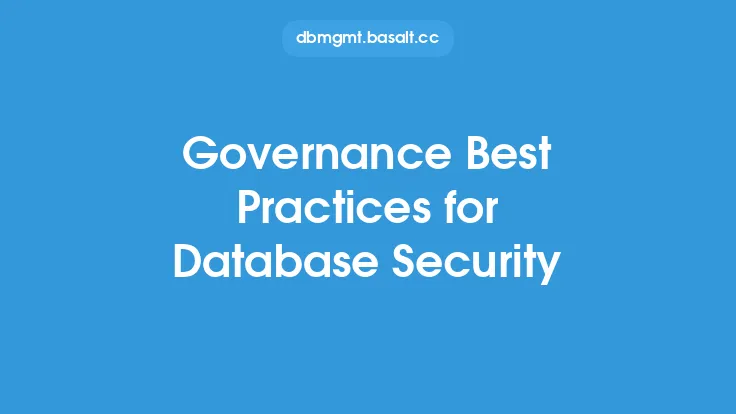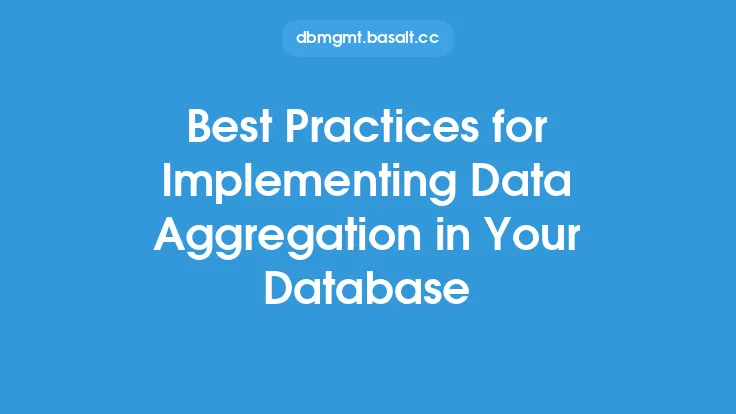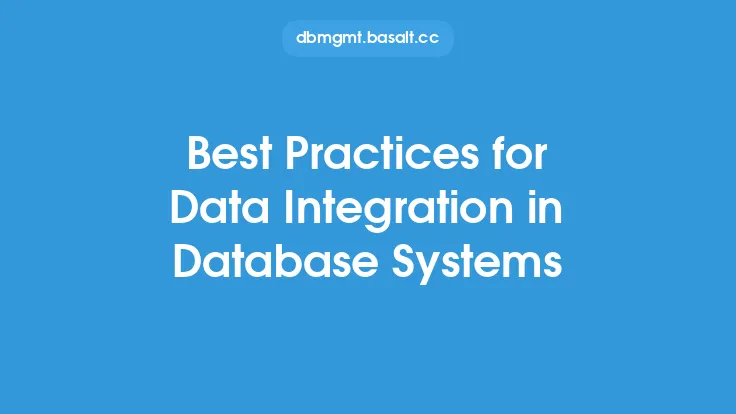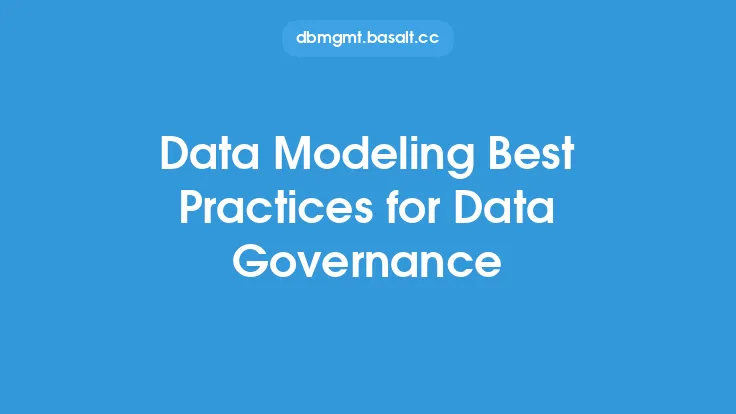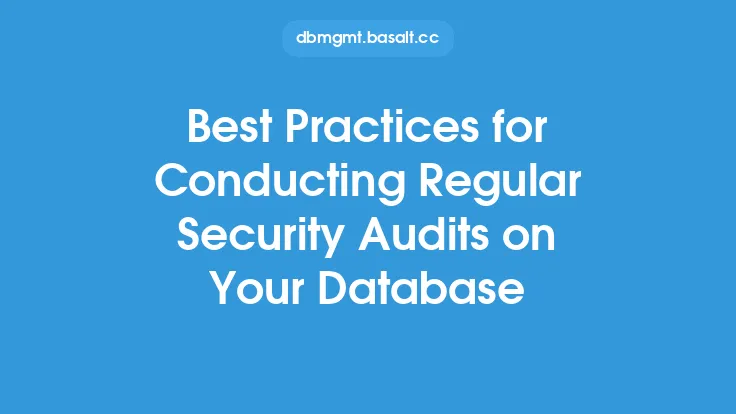Database governance is a critical aspect of database administration that ensures the security, integrity, and availability of an organization's data. As data becomes increasingly important for businesses, the need for effective database governance best practices has never been more pressing. In this article, we will delve into the best practices for database governance, focusing on data security, and provide a comprehensive overview of the technical and procedural aspects of implementing a robust database governance framework.
Introduction to Database Governance
Database governance refers to the set of policies, procedures, and standards that govern the management and use of an organization's databases. It encompasses a broad range of activities, including data security, data quality, data integrity, and compliance with regulatory requirements. Effective database governance is essential for ensuring that an organization's data is accurate, reliable, and secure, and that it is used in a way that supports the organization's goals and objectives.
Data Security Best Practices
Data security is a critical aspect of database governance, and it involves implementing measures to prevent unauthorized access, use, disclosure, modification, or destruction of an organization's data. Some best practices for data security include:
- Encrypting sensitive data, both in transit and at rest
- Implementing robust access controls, including authentication, authorization, and accounting (AAA)
- Using secure protocols for data transmission, such as SSL/TLS
- Regularly updating and patching database management systems and applications
- Implementing intrusion detection and prevention systems
- Conducting regular security audits and vulnerability assessments
- Implementing a incident response plan to quickly respond to security incidents
Access Control and Authentication
Access control and authentication are critical components of data security, and they involve implementing measures to ensure that only authorized users have access to an organization's data. Some best practices for access control and authentication include:
- Implementing role-based access control (RBAC) to restrict access to sensitive data
- Using multi-factor authentication (MFA) to verify the identity of users
- Implementing least privilege access to ensure that users only have the access they need to perform their jobs
- Regularly reviewing and updating access controls to ensure they are aligned with changing business needs
- Implementing segregation of duties to prevent any one user from having too much access
Data Encryption
Data encryption is a critical component of data security, and it involves converting plaintext data into unreadable ciphertext to prevent unauthorized access. Some best practices for data encryption include:
- Using industry-standard encryption algorithms, such as AES
- Encrypting sensitive data, both in transit and at rest
- Implementing key management best practices, including key generation, distribution, and rotation
- Using secure protocols for data transmission, such as SSL/TLS
- Regularly reviewing and updating encryption policies to ensure they are aligned with changing business needs
Auditing and Compliance
Auditing and compliance are critical components of database governance, and they involve implementing measures to ensure that an organization's databases are compliant with regulatory requirements and industry standards. Some best practices for auditing and compliance include:
- Implementing auditing and logging mechanisms to track all database activity
- Regularly reviewing and updating auditing and logging policies to ensure they are aligned with changing business needs
- Implementing compliance frameworks, such as HIPAA or PCI-DSS, to ensure compliance with regulatory requirements
- Conducting regular security audits and vulnerability assessments to identify and remediate security risks
- Implementing incident response plans to quickly respond to security incidents
Database Management System (DBMS) Security
DBMS security is a critical component of database governance, and it involves implementing measures to secure the DBMS itself. Some best practices for DBMS security include:
- Implementing secure configuration and change management practices
- Regularly updating and patching the DBMS
- Implementing robust access controls, including authentication, authorization, and accounting (AAA)
- Using secure protocols for data transmission, such as SSL/TLS
- Implementing auditing and logging mechanisms to track all DBMS activity
- Regularly reviewing and updating DBMS security policies to ensure they are aligned with changing business needs
Conclusion
In conclusion, database governance is a critical aspect of database administration that ensures the security, integrity, and availability of an organization's data. By implementing best practices for data security, access control and authentication, data encryption, auditing and compliance, and DBMS security, organizations can ensure that their data is accurate, reliable, and secure, and that it is used in a way that supports the organization's goals and objectives. Effective database governance requires a comprehensive and structured approach, and it involves implementing a range of technical and procedural measures to ensure the security and integrity of an organization's data. By following the best practices outlined in this article, organizations can establish a robust database governance framework that supports their business needs and ensures the long-term security and integrity of their data.
